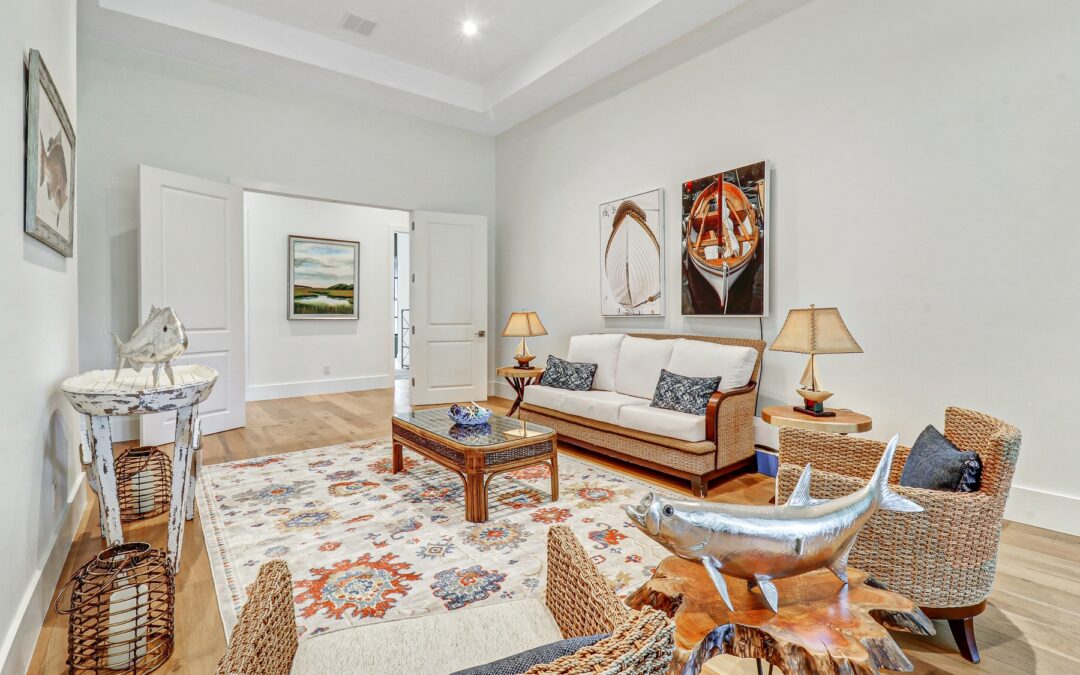In the realm of luxury home design, personalization is paramount. One of the most compelling ways to infuse personality and character into a custom home is by incorporating art and antiques. These elements not only add visual interest and sophistication but also tell a story, reflecting the homeowner’s taste, history, and passions. At May Residential, we understand the power of art and antiques in transforming spaces. Here’s how to integrate these timeless pieces into your custom home design.
Choosing the Right Pieces
Selecting the right art and antiques is the first and perhaps most crucial step in the process. It’s essential to choose pieces that resonate with you and fit seamlessly into your home’s design. Consider the following when making your selections:
- Personal Connection: Choose pieces that have personal meaning or emotional significance. This could be a painting from a favorite artist, a sculpture that evokes a special memory, or an antique that has been passed down through generations.
- Complementary Style: Ensure that the art and antiques complement your home’s overall design style. For instance, a contemporary home may benefit from modern art and minimalist sculptures, while a more traditional home might be better suited to classic paintings and vintage furniture.
- Quality and Authenticity: Invest in high-quality pieces that are authentic and well-crafted. These pieces will not only enhance the beauty of your home but also retain their value over time.
Integrating Art into Your Home
Once you’ve chosen your art pieces, the next step is to integrate them into your home’s design in a way that feels natural and cohesive. Here are some strategies to consider:
- Feature Walls: Create a focal point by dedicating a wall to showcase a significant piece of art. This could be in the living room, dining room, or even a hallway. Use proper lighting to highlight the piece and make it stand out.
- Gallery Displays: Arrange multiple pieces in a gallery-style display. This can be particularly effective in large, open spaces or along staircases. Mix and match different sizes and styles for a dynamic and interesting look.
- Functional Art: Incorporate art into functional elements of your home, such as custom-designed doors, stair railings, or fireplace mantels. This approach seamlessly blends form and function, adding an artistic touch to everyday elements.
Incorporating Antiques into Your Design
Antiques bring a sense of history and timeless elegance to any space. Integrating these pieces requires a thoughtful approach to ensure they enhance rather than overpower your design. Consider these tips:
- Focal Pieces: Use antiques as focal points in your rooms. An antique chandelier in the dining room, a vintage armoire in the bedroom, or an ornate mirror in the entryway can set the tone for the entire space.
- Mixing Eras: Don’t be afraid to mix different styles and eras. Combining modern furniture with antique pieces can create a unique and eclectic look that feels both curated and comfortable.
- Repurposing: Give new life to antiques by repurposing them. For example, an antique chest can be transformed into a bathroom vanity, or vintage doors can be used as a headboard. This approach preserves the history of the piece while making it functional for modern use.
Balancing Art and Antiques with Modern Design
The key to successfully incorporating art and antiques into your home is balance. Here are some ways to achieve harmony between these elements and contemporary design:
- Neutral Backdrop: Use a neutral color palette for walls and large furniture pieces to create a backdrop that allows your art and antiques to shine. This also makes it easier to change your decor over time without clashing.
- Mindful Placement: Be mindful of the placement of your pieces. Avoid overcrowding and ensure there is enough space for each item to be appreciated. This is especially important for larger or more intricate pieces.
- Consistency in Themes: While mixing styles can be effective, it’s important to maintain some consistency in themes or colors to create a cohesive look. For example, you might choose a common color scheme or motif that runs throughout your home.
Working with Professionals
Incorporating art and antiques into a custom home design can be complex, requiring a keen eye and careful planning. Working with professionals, such as interior designers and art consultants, can help ensure that your vision is executed flawlessly. At May Residential, we collaborate with experts to help our clients select and integrate these elements seamlessly into their homes.
Conclusion
Art and antiques are more than just decorative elements; they are expressions of individuality and history that bring depth and character to a home. By carefully selecting and thoughtfully integrating these pieces, you can create a custom home that is not only beautiful but also uniquely yours. At May Residential, we are dedicated to helping our clients realize their vision, creating spaces that are both luxurious and personal. Embrace the timeless elegance of art and antiques to elevate your home design to new heights.






